Firefly
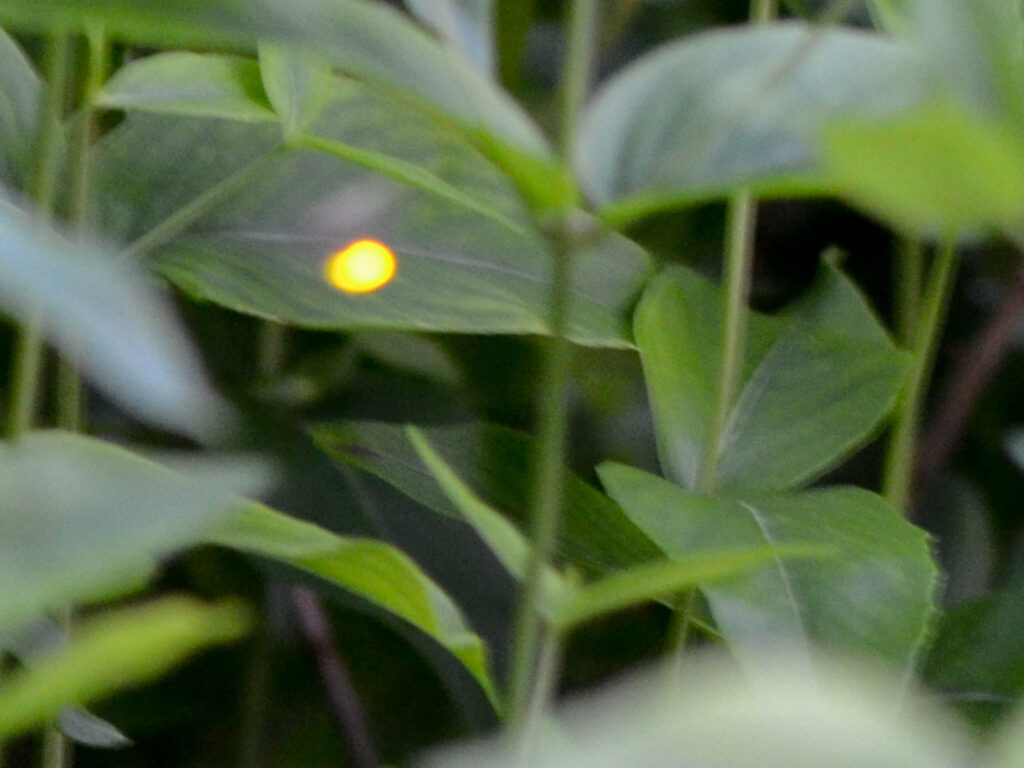
We’re lucky that we have fireflies in our yard.
Capturing a good image of a firefly blinking at night is beyond my photographic skills, so this is the best I could do, but during the day, it’s easier (below), though of course they aren’t blinking then.
They were so plentiful in our childhood years (many decades ago) that kids would capture them in jars (not a great idea!). Now they’re increasingly rare in neighborhoods (and elsewhere) due to light pollution, pesticides, and general lack of habitat (shrubs, leaf litter, etc.)
Black firefly (Lucidota atra)
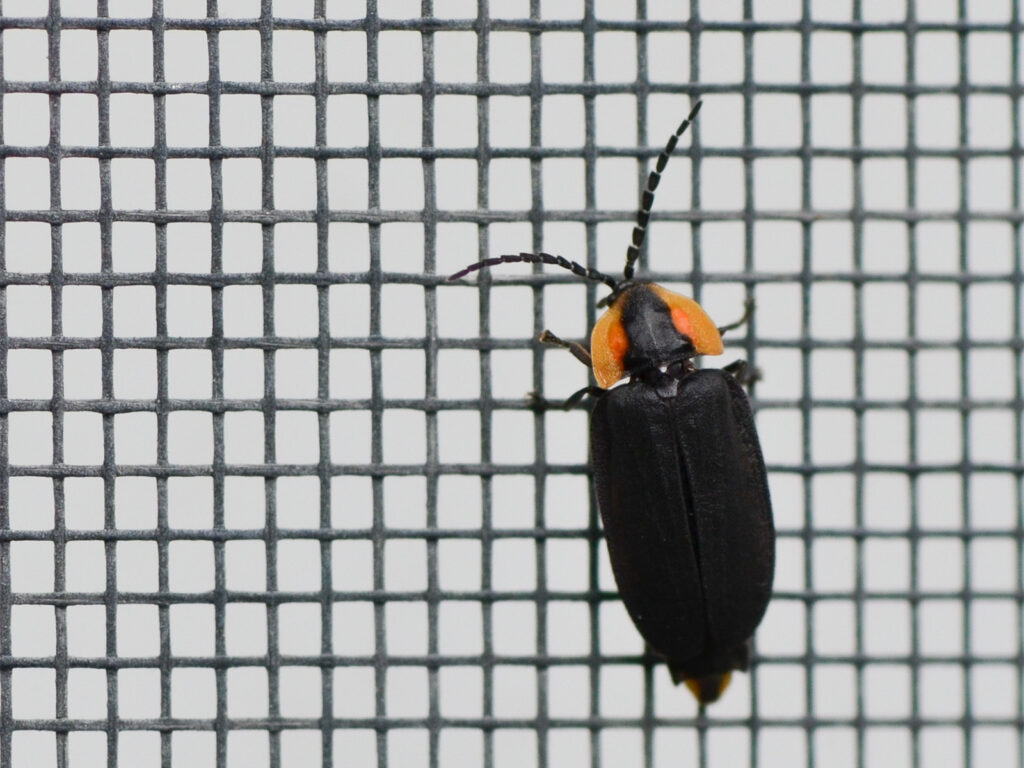
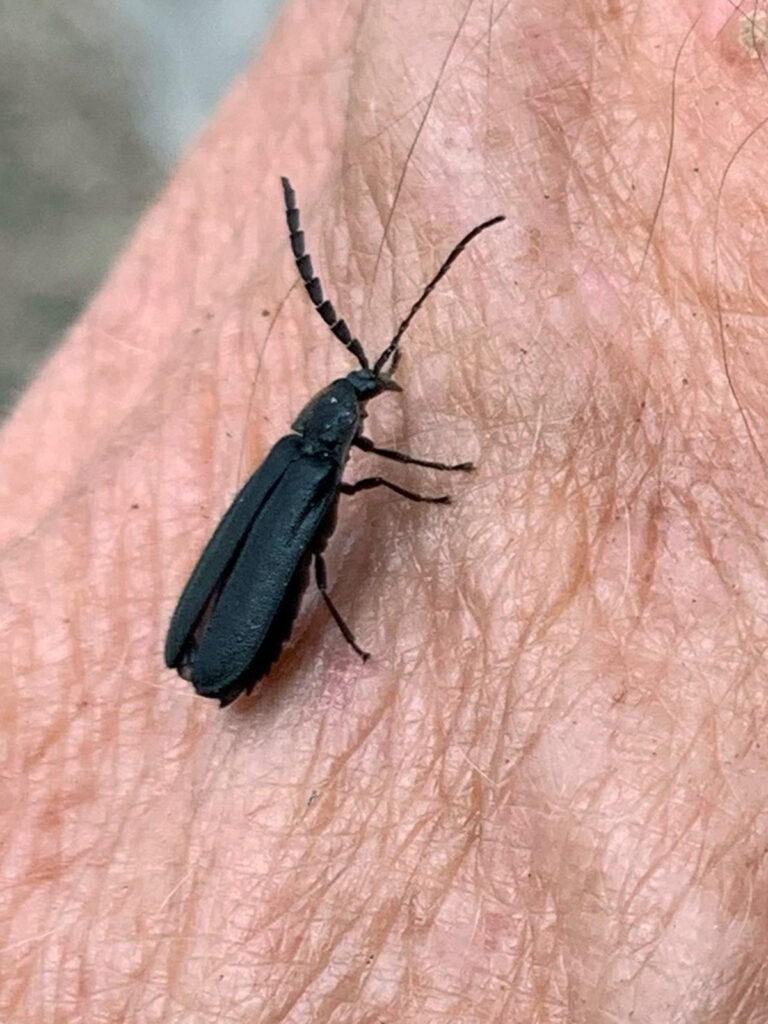
Another black firefly that happened to land on John’s hand.
It’s not surprising that the black firefly (Lucidota atra) is the only firefly I’ve been able to photograph in my yard. It’s only active during the day and attracts its mate with pheromones, so it doesn’t flash.
As The Humane Gardener notes, “Most fireflies require moisture throughout their lives, and mossy areas can make a wonderful firefly nursery. “
No wonder we have fireflies. We have lots of moss in our stream!
As The Humane Gardener says: Underneath rotting wood, fireflies pupate. Provide these safe havens by lining paths with logs and branches around your habitat. We have lots of those!
We have participated in the Firefly Watch community science program.
- The Humane Gardener:
- Firefly Conservation and Research:
- Mass Audubon:
- Firefly Watch – a community science project
- Xerces Society:
- State of the Fireflies of the US and Canada – a report
- Fireflies: Getting to know the jewels of the night – recorded webinar
- National Wildlife Fed’n:
- NY Times:
- Washington Post:
- Pollinator Pathway:
- Ask Nature:
Ladybugs
Yes, ladybugs are beetles. In fact, they’re often called lady beetles or ladybug beetles.
We have participated in the Lost Ladybug Project, a project of the National Science Foundation and Cornell University. They have a lot of good resources, including an ID guide.
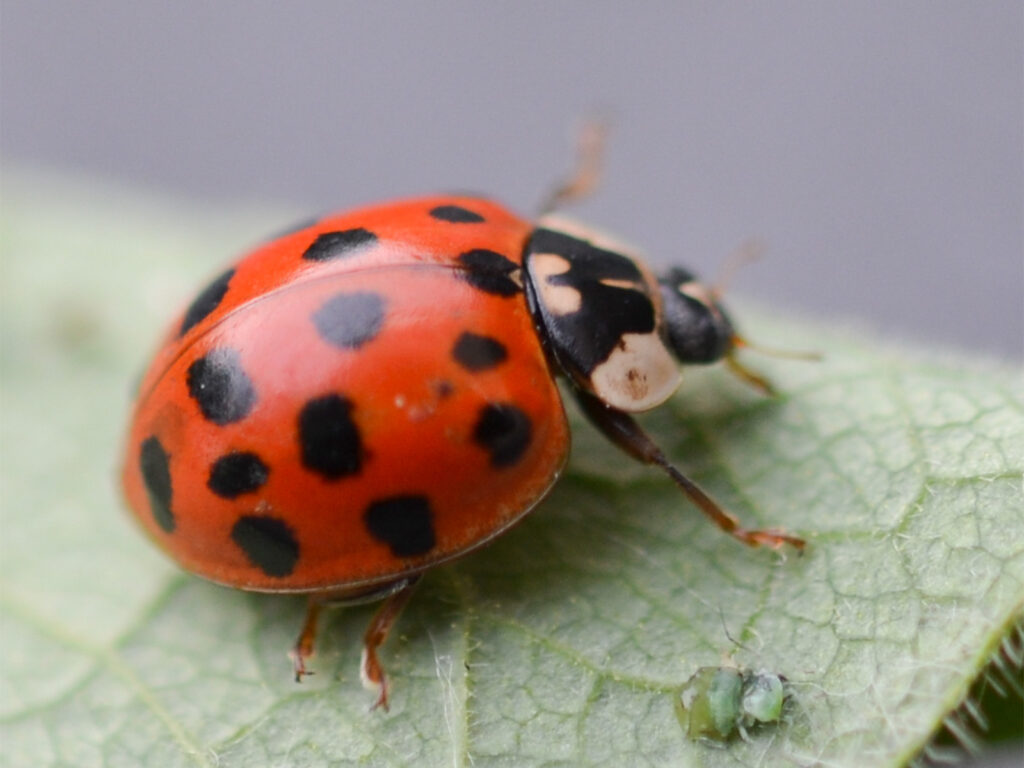
The ninespotted ladybug (Coccinella novemnotata) was once so common that it is the official New York State insect, yet now it’s hard to find.
Sadly, I think most of the ladybug beetles we see are the non-native invasive Asian ladybugs, as is the one in the photo. Why not show a native ladybug? Sadly, I’ve seen only non-native ones in our yard.
Bumble flower scarab beetle (Euphoria inda)
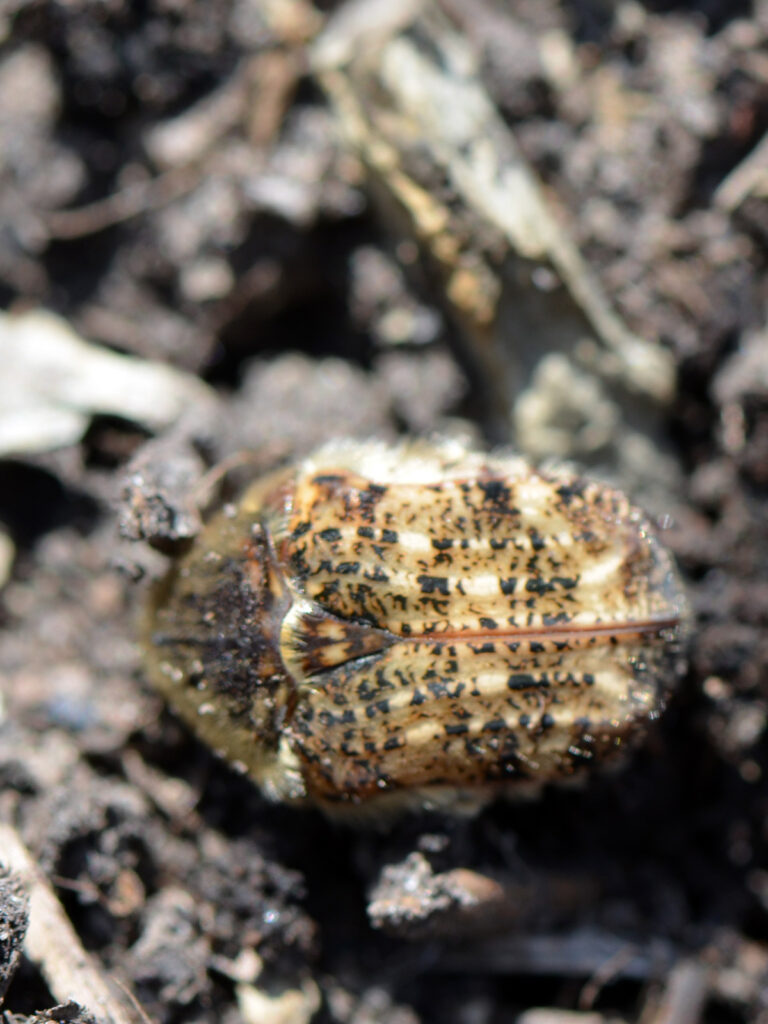
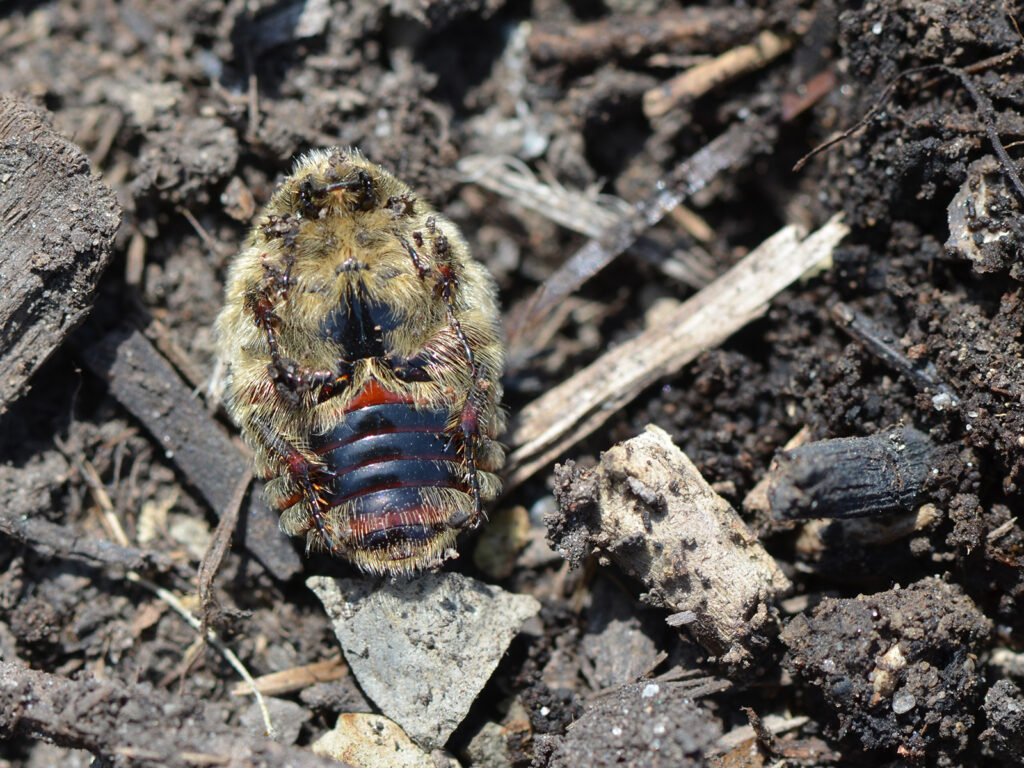
Banded longhorned beetle (Typocerus velutinus)
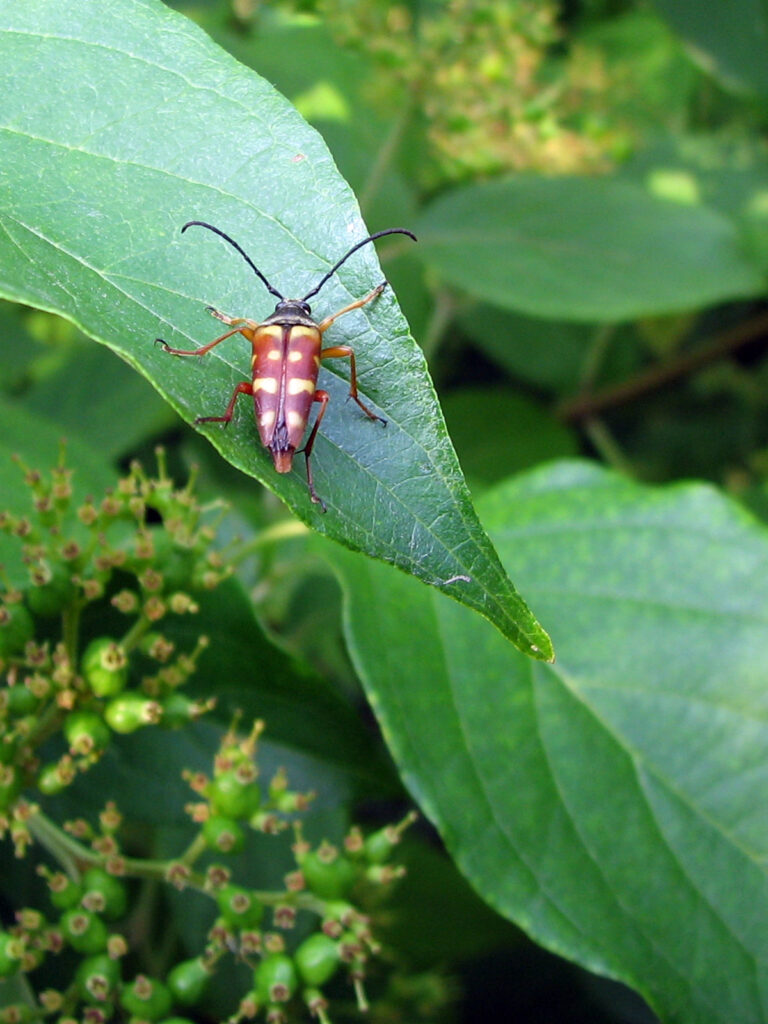
We noticed this interesting-looking beetle on our silky dogwood. BugGuide.net identified it for me.
Locust borer (Megacyllene robiniae)
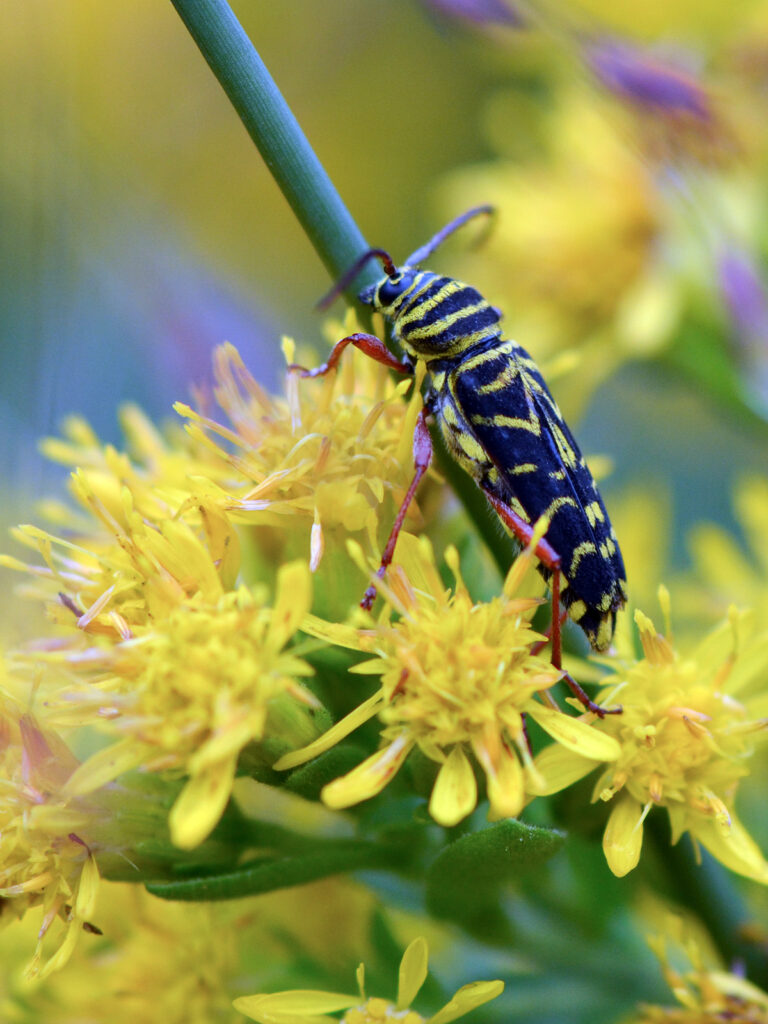
Very distinctive and fairly common in my yard.
Mottled tortoise beetle (Deloyala guttata)
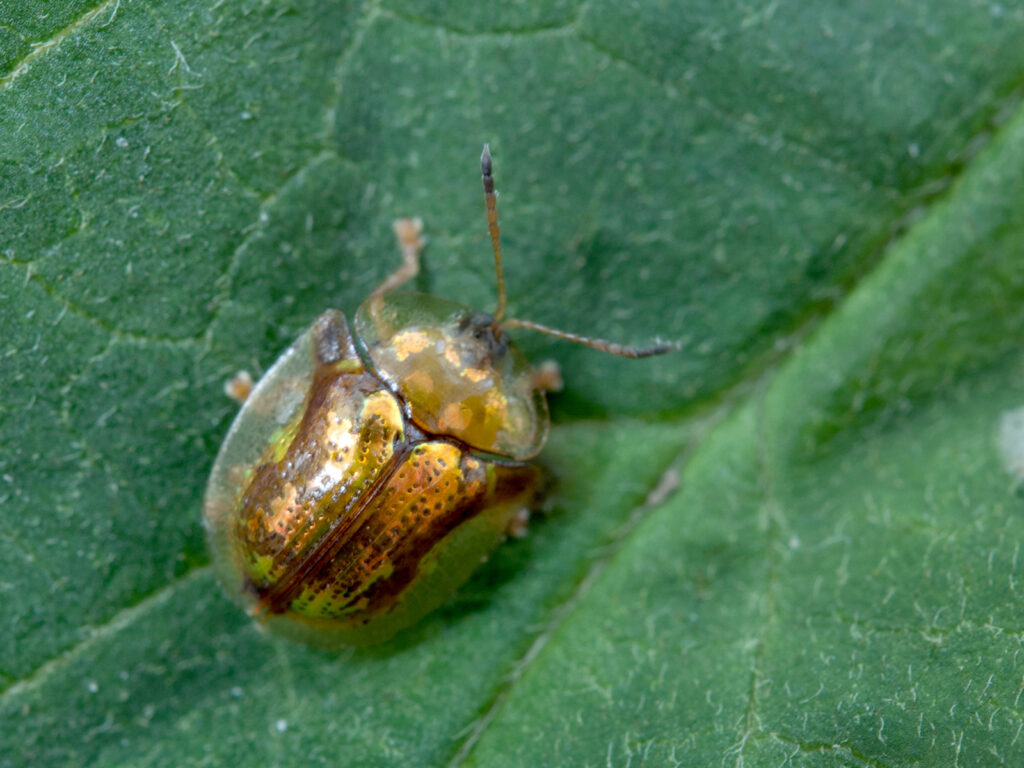
Even though this was less than 1/4 inch, it was striking because it was a shiny metallic gold color. I found it on a swamp milkweed leaf.
According to BugGuide.net, the larvae and adults feed on leaves of Convolvulaceae (morning glory family) and overwinters as an adult beneath leaf litter. They’re being tested for biocontrol of Field Bindweed (Convolvulus arvensis).
Swamp milkweed beetle (Labidomera clivicollis)
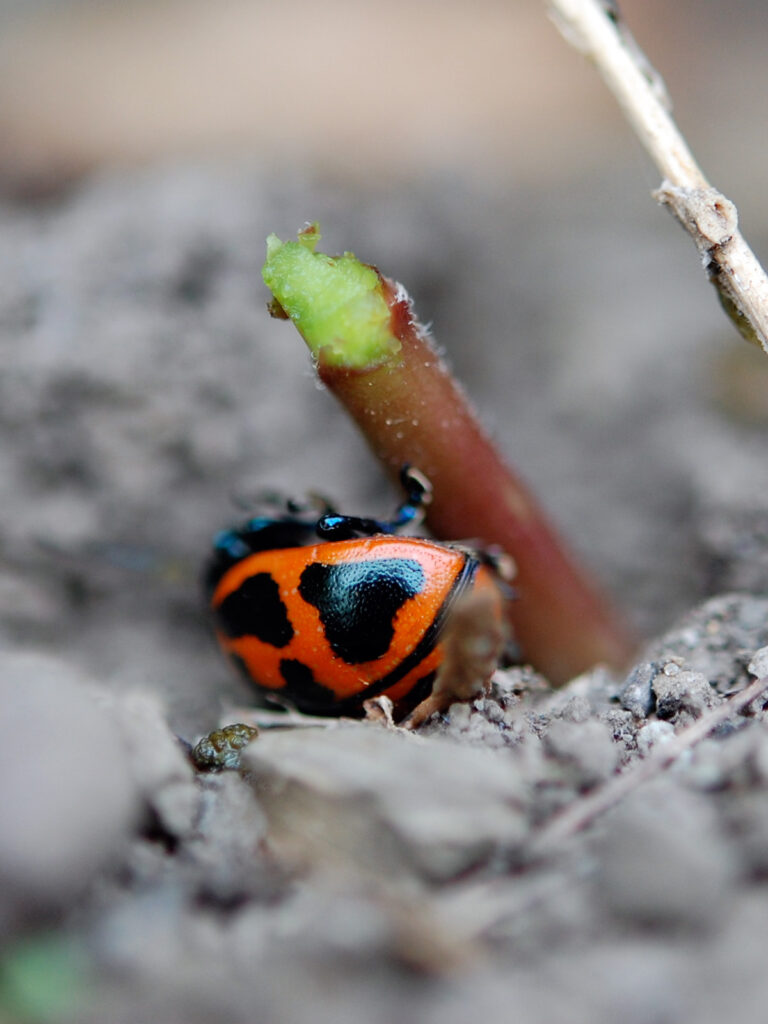
This beetle can eat the entire growing tip of the swamp milkweed plant when it first emerges in spring. They’re voracious. (See more about different stages of this beetle…
Milkweed longhorn beetle (Tetraopes tetrophthalmus)
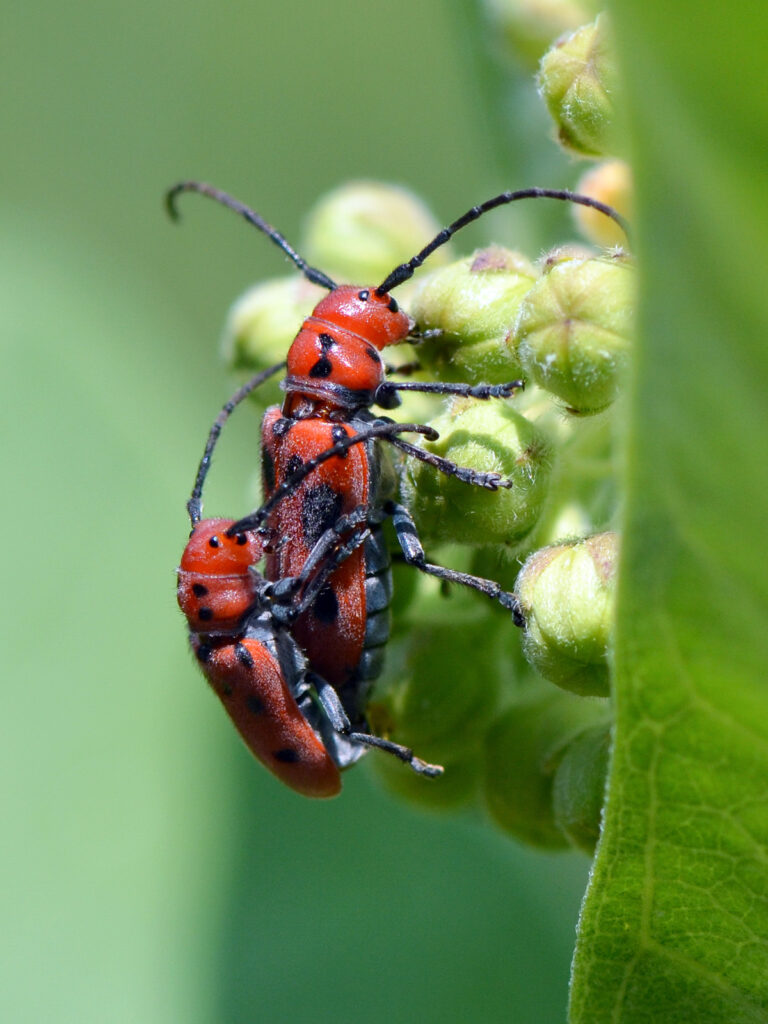
Acorn weevil beetle (Curculio glandium)
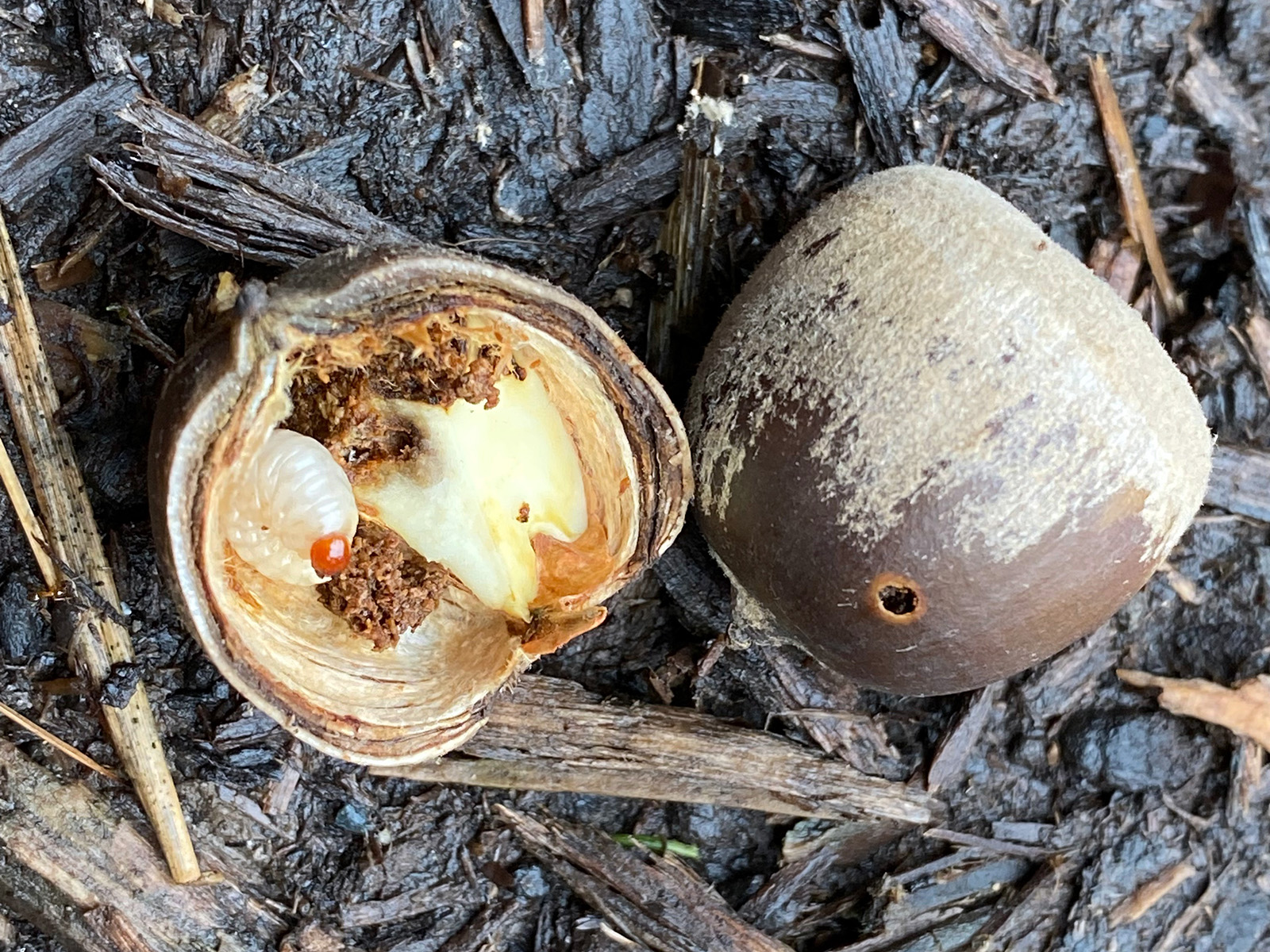
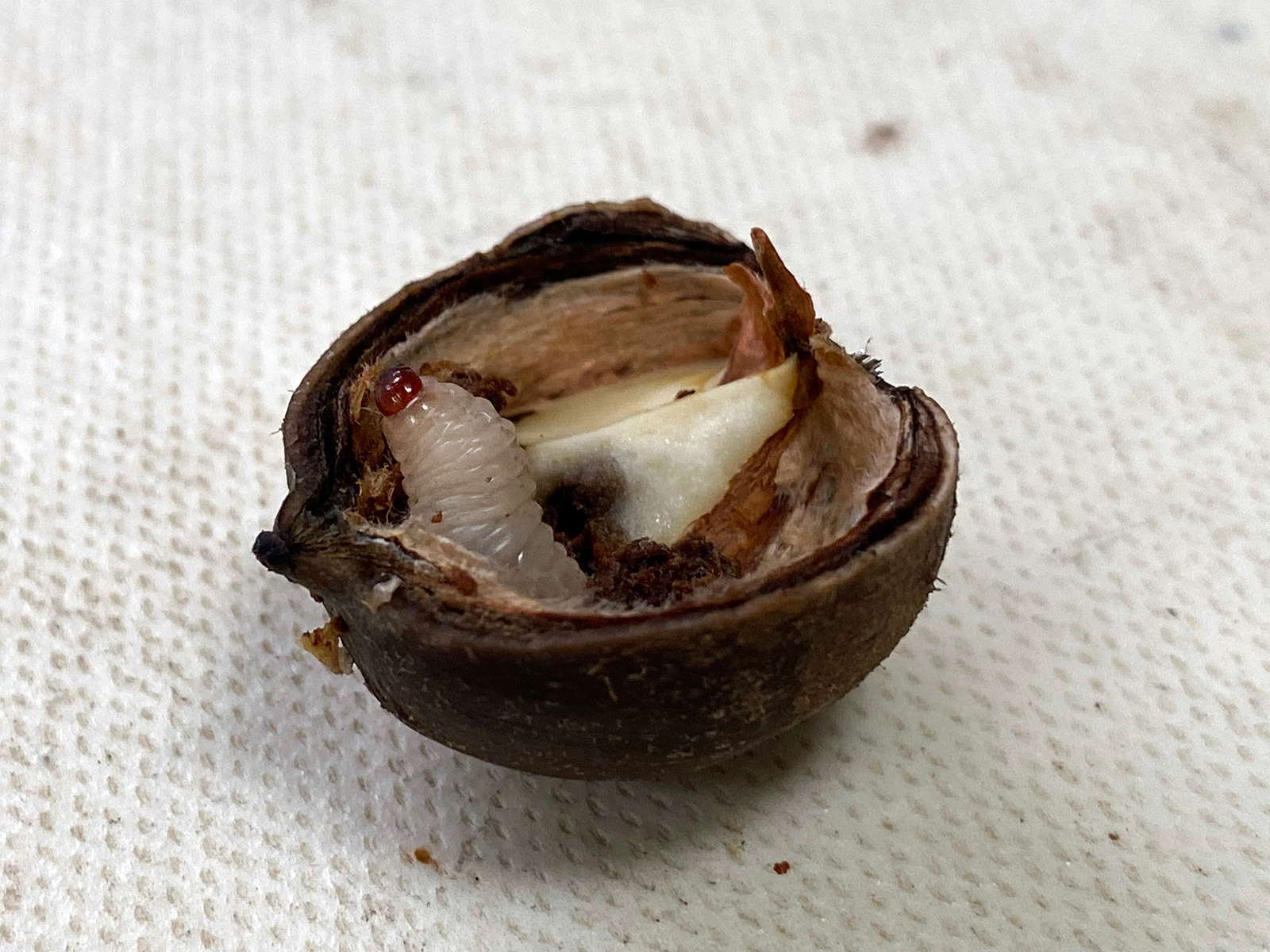
Cucumber beetle (Acalymma vittatum)
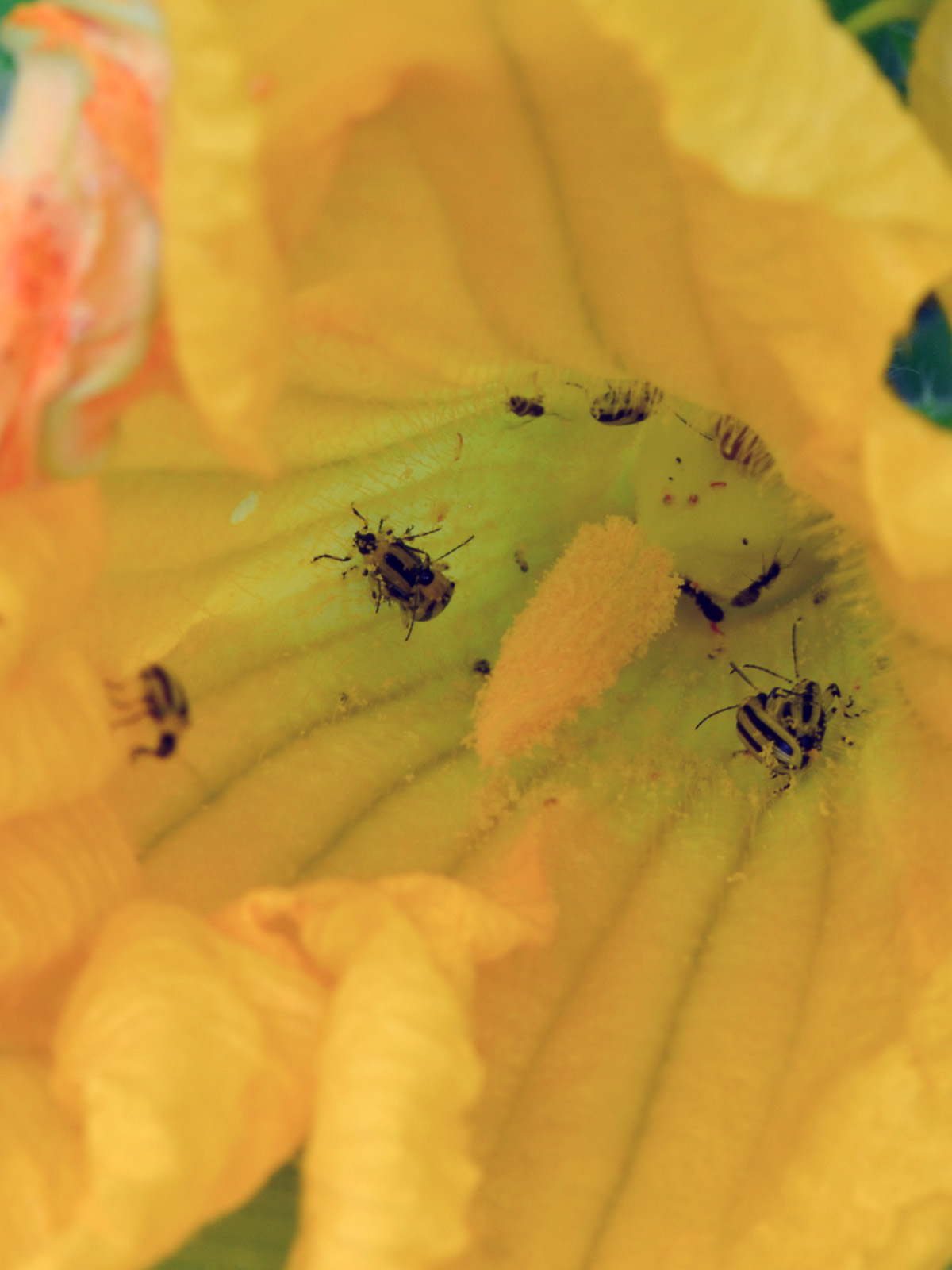
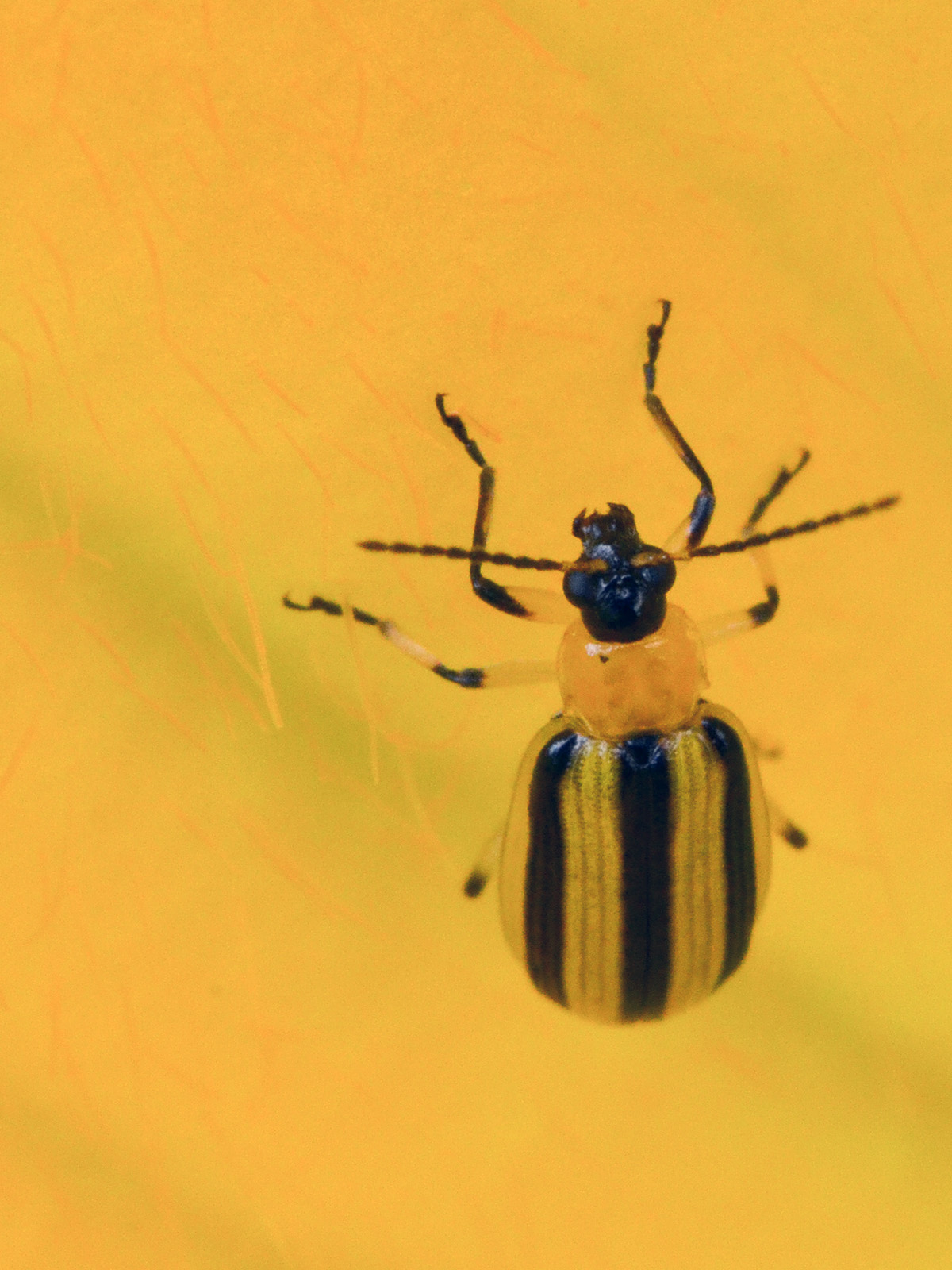
Cute, but not the most welcome sight in our vegetable garden!
Goldenrod soldier beetle (Chauliognathus pensylvanicus)
These happen to be on a boneset, not a goldenrod. They’re fairly common in our yard.
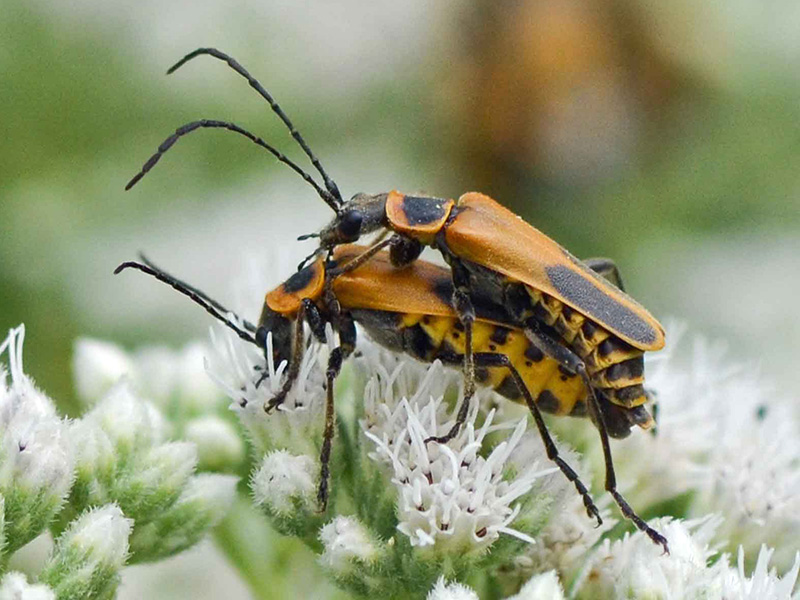
Dogbane beetle (Chrysochus auratus)
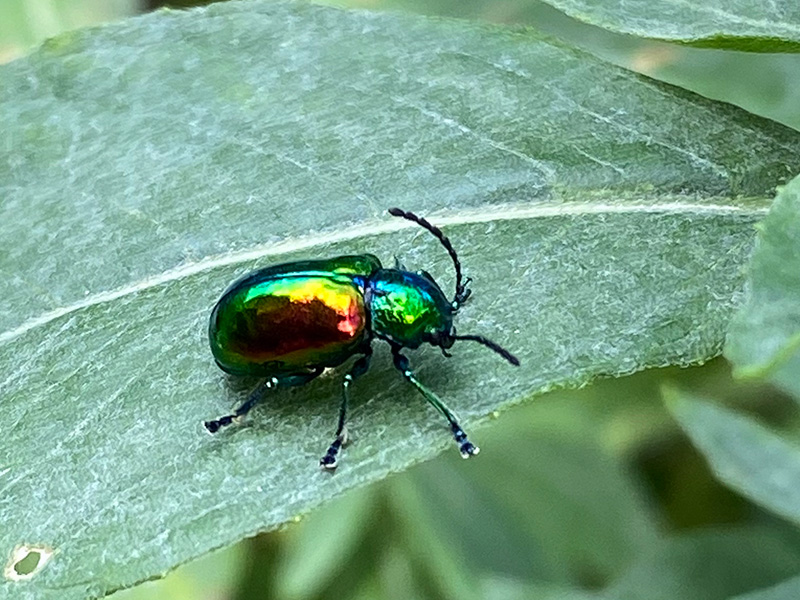
A very beautiful beetle — every bit as iridescent in person as it looks in the photo!
Its diet consists mostly of dogbane, but also is found on milkweed, so I guess that’s what it attracted it to my yard.
